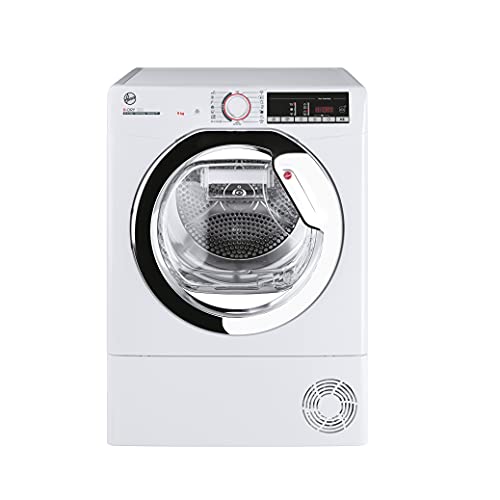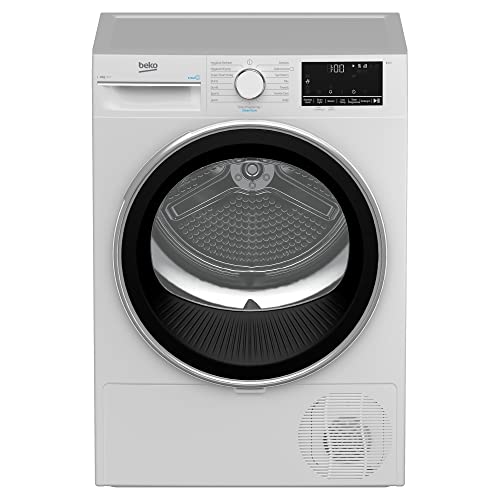Guide To Heatpump Dryer: The Intermediate Guide Towards Heatpump Dryer
페이지 정보
작성자 Aubrey 작성일24-06-01 00:16 조회69회 댓글0건관련링크
본문
 What is a Heatpump Dryer?
What is a Heatpump Dryer? A heatpump dryer can be an energy-efficient alternative to a fossil fuel-powered clothing dryer that draws air from outside instead of exhausting it inside. It saves more than just energy.
A heatpump dryer can be an energy-efficient alternative to a fossil fuel-powered clothing dryer that draws air from outside instead of exhausting it inside. It saves more than just energy.The compressor pumps a refrigerant via another set of coils. This warms up the air which is used to dry clothes.
Energy Efficiency
A heatpump dryer uses the combination of an air compressor Best heat pump Tumble Dryer and evaporator to remove moisture from your clothes. This technology is an excellent option for those looking to cut back on their energy usage, but don't have the space or capacity to hang their clothes on an elongated line or run a traditional dryer. They don't require vent pipes because they are ventless. The air is sourced from outside, pumped through a filtration system, and then exhausted. This closed-loop system helps conserve energy by not wastefully exhausting the air inside that was heated or cooled before entering the home (as traditional dryers do).
It's also a good option for those who want to minimize their exposure to pollutants from the environment like pollen, dust, and mold. When the pumped-in air passes through a filter, the majority of the UFPs (Ultrafine Particles) are pulled into condensed water, and then released as water vapour. This stops them from being released into the air and causing respiratory issues like they would in a typical vented dryer.
The energy efficiency of a heatpump is the main benefit. It can save as much as 50 percent of the energy used for drying when compared to conventional dryers. It can also save as much as 30 percent of the energy used for a gas-powered dryer, and more than 40 percent of the electricity required by a dryer that is powered by electricity. Moreover, it can save up to 10% of the energy required for cooling, compared to the typical dryer.
In the past, the majority of research in drying with heat pumps was focused exclusively on the heat pump. In recent years the focus has moved to the overall performance. This performance can be measured using the COP (coefficient of performance) and SMER (specific moisture extraction rate, i.e. the kilogram of water removed per kilowatt-hour) and drying efficiencies (Chua et al. 2001).
Heating pump assisted drying is more economical and can provide a better product than hot air drying. A study by Soponronnarit & Prasertsan found that tomato slices dried with a heat-pump dryer have a more lively color and aroma when in comparison to slices dried with hot air dryers.
Moisture Removal
The evaporator of a heat pump dryer absorbs water vapour from the fabric as it passes. The moisture is absorbed by the evaporator, and heatpump Dryer then disposed of into the drain pan or directly into the sink. This is one of the major advantages of heat pumps over resistance dryers, which rely on an element of heating to generate the required heat. Heat pump dryers don't add any additional humidity to your home, and they will save you time and money by reducing drying times.
Similar to conventional dryers, heat-pump models make use of a compressor to create heat by compressing a liquid. As the fluid is compressed and heated, it absorbs the heat from the air and transmits this heat to the fabric. Heat-pump models are more energy efficient and can reduce your utility bill by as much as 30%..
Heat-pump drying systems are also smaller and require less maintenance than traditional dryers. They are made up of fewer components and they don't contain any resistance heaters which are the cause of energy waste in most conventional dryers. However, heat-pump dryers can have lint screens that require to be cleaned regularly and may need regular cleaning of the condenser coils, which are responsible for the transfer of heat from the evaporator.
The performance of the Heat Pump Dryer can be evaluated by measuring the specific humidity extraction rate (SMER), which indicates the capacity of the dryer. And the energy efficiency of a Heat Pump Dryer can be measured by its COP or coefficient of performance. This is the ratio of the heat that is absorbed by the condenser and the work done by a compressor. In this study the performance of a heat pump dryer (HPD) was tested experimentally by using different designs and test loads (4 kg and 7 kg). The HPD was equipped a desiccant-wheel Adsorption system in the dryer's inlet.
The drying processes of the four designs of the HPD were investigated by testing the SMER at a constant volumetric flowrate of 100 milliliters per hour. The three designs all reached an equilibrium during the drying process. Furthermore, it was demonstrated that the performance of the HPD improved when the device for adsorption was placed in the outlet of the dryer instead of at the outlet.
Fabric Care
The lower drying temperatures of heat pump dryers protect fabrics from damage caused by excessive heat and prolong their life and preventing shrinkage. They also provide a gentler cleaning experience than vented dryers. This makes them a good option for delicate or natural fabrics, such as cotton and wool.
A proper maintenance and use can enhance the energy efficiency of heat pump dryers and their ability to care for fabric. Regularly cleaning the lint filter and condenser unit, emptying the water container, and clearing the air intake vents will help to ensure that your dryer operates optimally.
Cleaning the lint filter in your heat pump dryer on a regular basis will stop the build-up of lint which could cause the appliance to overheat and reduce its performance. It's important to remove the lint screen at the end of each drying cycle and wash it thoroughly by using warm water. Let it dry completely before reinstalling in the dryer.
Emptying the water container in your heat pump dryer will prevent the build-up and eventual flooding from excess water which could be harmful to the appliance. This can be accomplished by removing the water from the container using the sink or hose. Then rinse it off and let the container dry completely prior to reinstalling in your dryer.
To maintain optimal fabric care, it's important to select the correct temperature setting for each load of laundry. Synthetic fabrics and sportswear require low drying temperatures to prevent damage, while cotton fabrics and upholstery can handle higher temperatures. Bosch heat pump dryers offer several drying programs to accommodate different types of fabrics and washing conditions.
A heat pump dryer that has a PerfectDry feature can automatically adjust the duration and temperature of each drying cycle to the appropriate level. This eliminates guesswork, saving you time. For instance the 40' Express Cycle gets a tiny 2 lb load of laundry dry and ready to wear in less than an hour.
A heat pump dryer is likely to be the ideal choice for you if you're looking for a sustainable, efficient laundry solution, or if you just want to upgrade your laundry room. Browse Aztec's top-rated brands to find the heat dryers that meet your requirements.
Longevity
Although heat pump dryers have been in use for a while in Europe and other countries, they're relatively new to the American market. The heat pump dryer is one of two kinds of ventless dryers. The other type is the condenser dryer. Both have their advantages and drawbacks, however heat pump dryers are becoming more popular.
In contrast to traditional vented dryers which generate heat to dry laundry and then let the warm air out they recycle the energy they use to power the drying process. Heat-pump dryers are more efficient in energy use than standard dryers and last for longer.
In addition to being environmentally friendly, heat-pump tumble dryer dryers are less harsh on clothing. They are able to protect expensive fabrics since they don't add any heat to the process. They are therefore perfect for delicate fabrics like wool and cashmere. A drying system that uses heat is also more efficient than traditional dryers. It can help you save time by cutting down on wrinkles.
However, a dryer with a heat pump doesn't eliminate the need for maintenance. Like all dryers, it is necessary to clean the bottom container and the lint filter regularly. You'll also need to ensure that the dryer is level to ensure that it doesn't strain its motor. Regular maintenance can prolong the life of a heat pump dryer.
A model with a heat pump has a longer time-to-live than traditional vented models. Traditional vented dryers require a vent pipe that runs to the outside of your home. This pipe is needed to remove excess moisture and heat, however it can get blocked with time. Regular maintenance can extend the lifespan of a dryer and it is much easier than removing a wall from your home.
The dryers that use heat are also more resistant to humidity than traditional vented dryers, and can operate at lower temperatures which is great news for those with sensitive skin or allergies. Certain heat-pump drying devices can run using an electrical circuit that is standard, which is 120-volts and 15-amps. This is a great option for those who live in apartments or homes with only a few wires.
댓글목록
등록된 댓글이 없습니다.

